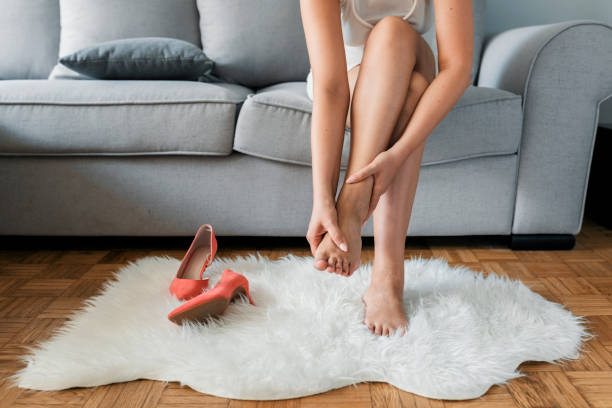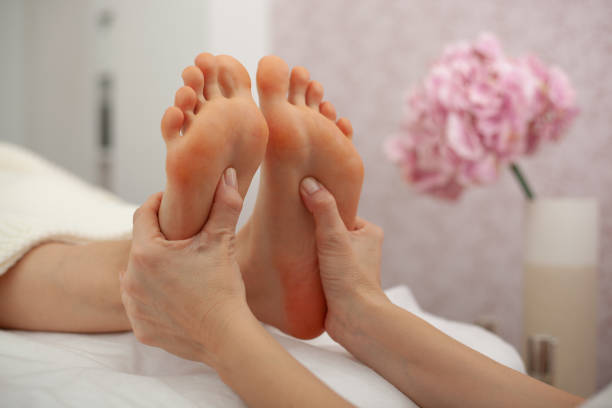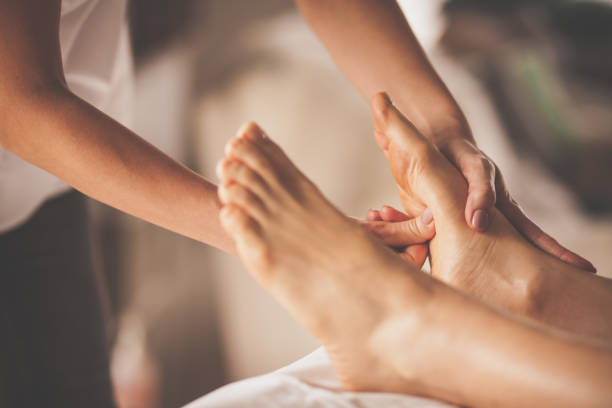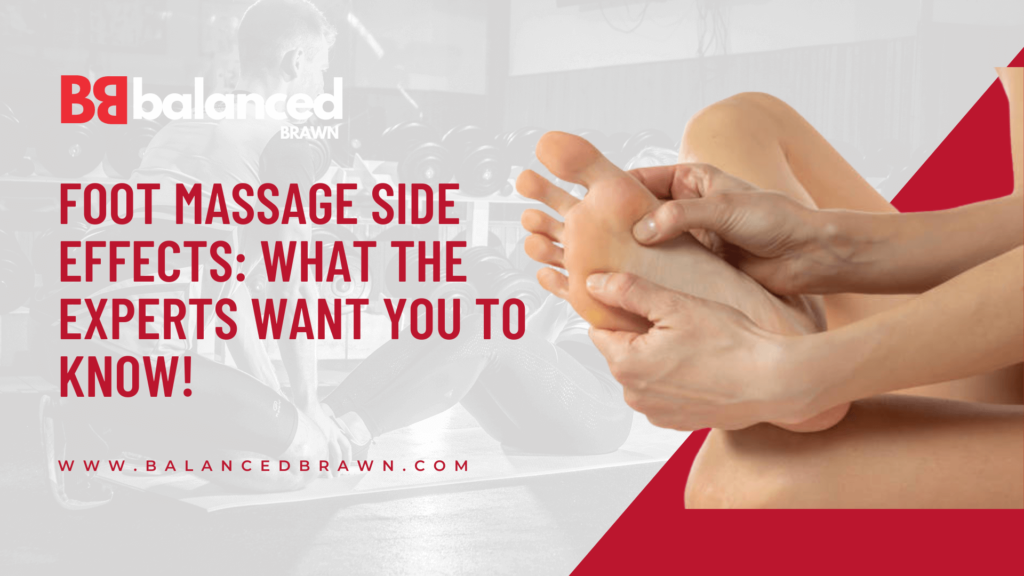Table of Contents
Foot massages have been revered for centuries as a powerful tool for promoting relaxation, reducing pain and tension, and even providing therapeutic benefits for various conditions. From improving circulation to alleviating stress and anxiety, the advantages of this ancient practice are numerous. However, as with any therapeutic modality, it’s essential to be aware of the potential side effects and precautions associated with foot massage.
While generally considered safe when performed correctly, foot massages can occasionally lead to unwanted reactions or aggravate existing conditions if proper precautions aren’t taken. This comprehensive guide will explore the most common side effects of foot massage, conditions that may require avoiding or modifying the technique, and tips for ensuring a safe and enjoyable experience.
Why You May Feel Tired After a Foot Massage

It’s not uncommon to experience a sense of fatigue or tiredness following a foot massage, especially if it’s your first time receiving one. This phenomenon can be attributed to a few key factors:
– Release of Metabolic Byproducts
During a foot massage, the applied pressure and manipulation help flush out lactic acid and other metabolic byproducts that have built up in the muscles and soft tissues of the feet. While this process is beneficial for reducing soreness and stiffness, it can initially lead to feelings of tiredness as these substances enter the bloodstream.
– Increased Blood Flow
Foot massages stimulate improved circulation, directing more blood flow to the feet and lower extremities. This redirection of energy and resources can temporarily leave other parts of the body feeling depleted or fatigued.
– Relaxation Response
The relaxing nature of foot massages can trigger the body’s innate “rest and digest” response, similar to the effects of meditation or deep breathing exercises. As the mind and muscles release tension, this profound state of relaxation can manifest as a feeling of tiredness or drowsiness.
To help manage post-massage fatigue, be sure to stay hydrated by drinking plenty of water before and after your session. Engaging in light activity, such as gentle stretching or a short walk, can also help counteract feelings of tiredness by promoting better circulation and energy flow throughout the body.
Potential Side Effects of Foot Massage

While rare, there are some potential side effects that can occur during or after a foot massage. Being aware of these possibilities can help you identify when to seek medical attention or modify your massage routine:
– Bruising or Discoloration
Excessive pressure during a foot massage can lead to bruising, especially in areas with high concentrations of blood vessels or nerve endings like the arches and balls of the feet. Proper technique and communication with your massage therapist can help prevent this.
– Dizziness or Lightheadedness
For some individuals, the intense relaxation and redistribution of blood flow during a foot massage can contribute to temporary dizziness or feelings of lightheadedness. This is typically mild and resolves quickly, but can be a concern for those with low blood pressure or vertigo.
– Nausea or Headaches
In rare cases, the combination of increased circulation and the release of metabolic byproducts during a foot massage can trigger nausea or headaches, especially if the massage is performed too vigorously or for an extended duration.
– Aggravation of Existing Injuries or Conditions
If you have a pre-existing injury, inflammation, or condition affecting your feet or lower extremities, a foot massage may exacerbate these issues if not performed with proper care and precautions.
If you experience severe, persistent, or worsening side effects following a foot massage, it’s crucial to seek medical attention promptly. While mild reactions are usually temporary and harmless, more severe symptoms could indicate an underlying condition or complication that requires professional evaluation.
Conditions That May Require Avoiding Foot Massage

For most individuals, foot massages are generally safe and beneficial. However, there are certain conditions or circumstances where it may be advisable to avoid foot massage altogether or to proceed with caution under the guidance of a healthcare professional:
– Blood Clotting Disorders or Deep Vein Thrombosis (DVT)
Massaging the feet and lower extremities can potentially dislodge existing blood clots, leading to dangerous complications. Those with a history of DVT or clotting disorders should consult a doctor before receiving a foot massage.
– Fractures, Gout, or Severe Edema in the Feet/Ankles
Any injuries, acute inflammation, or significant swelling in the foot or ankle region can be further aggravated by the pressure and manipulation of a foot massage. It’s best to avoid massage until these conditions have fully healed or subsided.
– Diabetes or Peripheral Neuropathy
While foot massages can potentially provide benefits for those with diabetes or neuropathy, it’s crucial to proceed with caution and under the supervision of a qualified professional. Reduced sensation in the feet can increase the risk of injury or tissue damage during massage.
– Osteoporosis or Arthritis in Foot/Ankle Joints
The applied pressure of a foot massage may be too intense for those with severe bone loss or joint degeneration in the feet or ankles, potentially leading to discomfort or further damage.
– Open Wounds, Cuts, or Skin Infections on the Feet
Any open or actively infected areas on the feet should be avoided during massage to prevent further irritation, spreading of infection, or introduction of bacteria.
If you have any of these conditions or concerns, it’s essential to consult with your healthcare provider before receiving a foot massage. They can advise you on the appropriate precautions, modifications, or alternative therapies that may be safer for your specific situation.
Contraindications and Precautions

Even for those without pre-existing conditions, there are certain areas and situations where extra caution should be exercised during a foot massage:
– Avoiding Massage Over Varicose Veins
Applying direct pressure to varicose veins can lead to discomfort, bruising, or potential complications. Gently massaging around these areas is recommended instead.
– Using Lighter Pressure for Certain Conditions
If you have a history of injury, inflammation, or sensitivity in the feet or lower extremities, your massage therapist may need to adjust their pressure and technique accordingly to avoid further aggravation.
– Not Massaging Inflamed or Injured Areas
Any areas of the feet that are actively injured, swollen, or inflamed should be avoided during massage until the issue has resolved to prevent further harm or discomfort.
– Staying Hydrated Before and After Massage
Proper hydration can help minimize side effects like fatigue, dizziness, or nausea by supporting healthy circulation and the flushing of metabolic byproducts during and after your massage session.
By being aware of these contraindications and taking appropriate precautions, you can help ensure a safe and enjoyable foot massage experience while minimizing the risk of any adverse reactions or complications.
Tips for a Safe and Enjoyable Foot Massage

Whether you’re receiving a professional foot massage or practicing self-massage at home, there are several steps you can take to maximize safety and enjoyment:
– Communicate Any Discomfort or Concerns to the Therapist
Don’t hesitate to speak up if you experience any pain, discomfort, or concerns during your foot massage. A skilled therapist will be able to adjust their technique or pressure accordingly to ensure your comfort and well-being.
– Start Slowly and Gently, Especially for First-Time Recipients
If you’ve never received a foot massage before, it’s best to begin with lighter pressure and shorter durations, gradually increasing intensity as your body adjusts to the sensations. This can help prevent potential side effects like soreness or fatigue.
– Properly Warm Up the Feet Beforehand
Taking a warm foot bath or applying a heating pad to the feet before your massage can help relax and prepare the muscles and tissues, reducing the risk of discomfort or injury during the massage itself.
– Use Quality Massage Oils or Lotions
Applying a high-quality massage oil or lotion can enhance the experience by facilitating smooth, gliding strokes and preventing excessive friction or irritation to the skin.
By following these tips and being mindful of your body’s responses, you can help ensure a safe, relaxing, and enjoyable foot massage experience while minimizing the risk of any potential side effects.
Bottom Line
While foot massages offer a wealth of benefits for relaxation, pain relief, and overall well-being, it’s essential to be aware of the potential side effects and precautions associated with this practice. From temporary fatigue and bruising to more serious concerns for those with certain medical conditions, understanding the risks can help you make informed decisions and take appropriate measures to ensure a safe and enjoyable experience.
If you have any underlying health conditions or concerns, it’s always advisable to consult with your healthcare provider before receiving a foot massage. They can provide guidance on any necessary modifications, precautions, or alternative therapies that may be more suitable for your specific situation.
Remember, most side effects associated with foot massage are mild and temporary, especially when proper technique and precautions are followed. By staying hydrated, communicating with your massage therapist, and being mindful of your body’s responses, you can help minimize the risk of any adverse reactions.








We’re a group of volunteers and opening a new scheme in our community. Your web site offered us with valuable info to work on. You’ve done an impressive job and our whole community will be thankful to you.
Your comment is awaiting moderation.